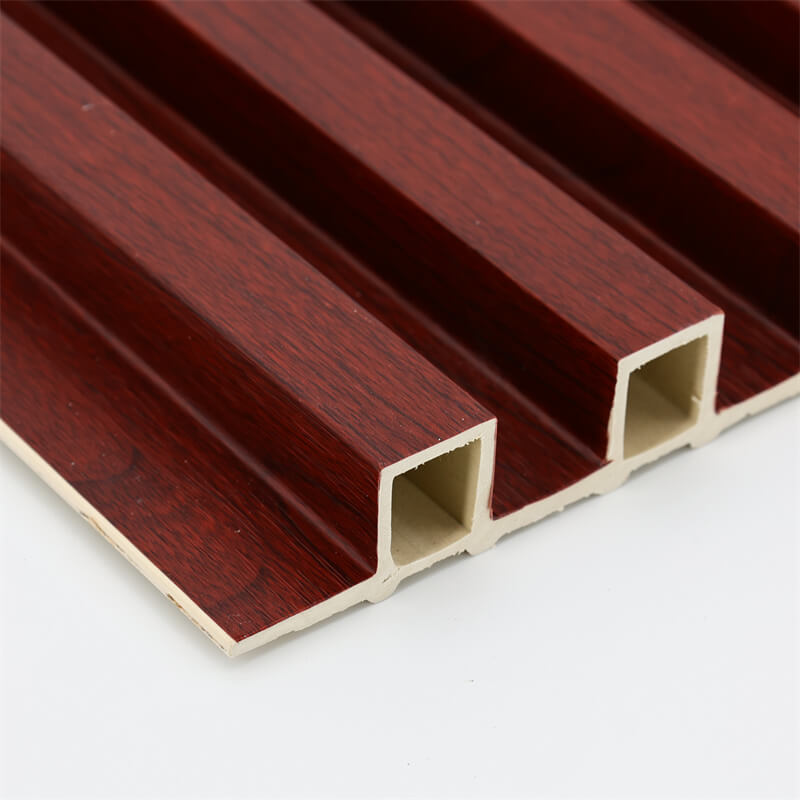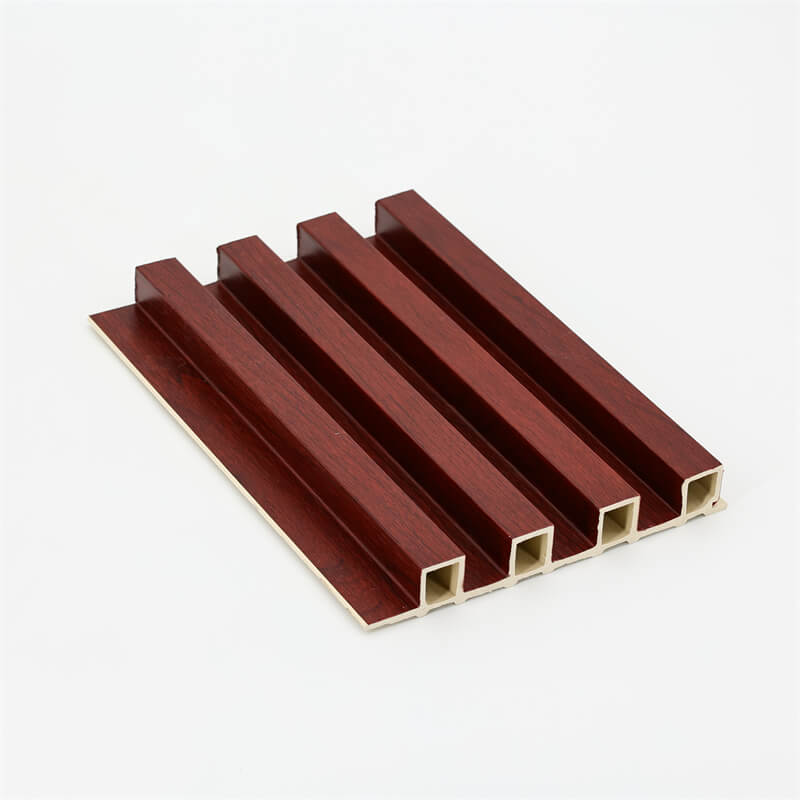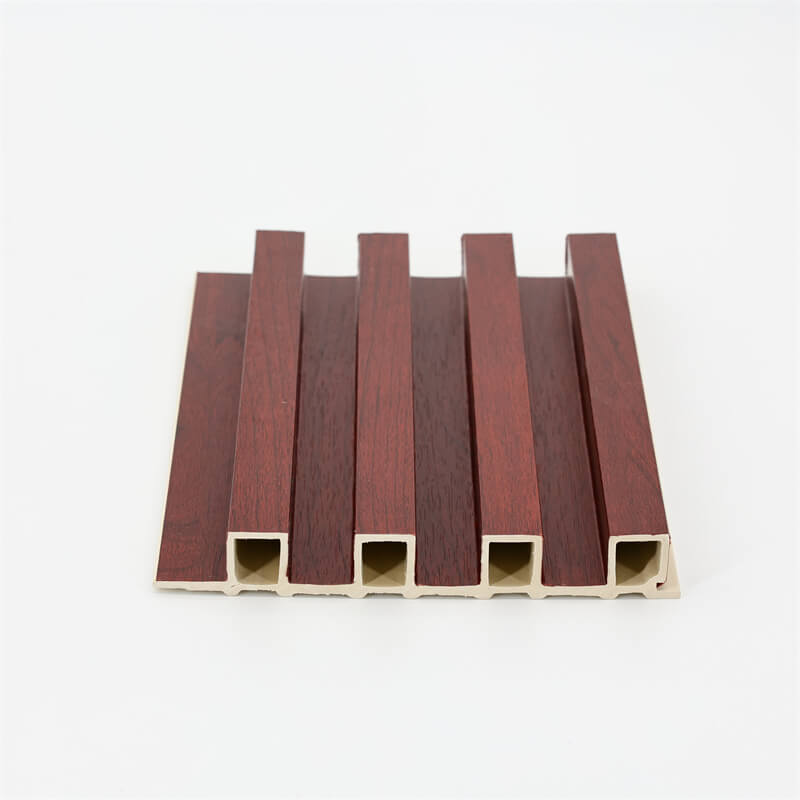
WPC wood slat panels offer a unique combination of beauty, durability, and eco-friendliness, making them a popular choice for a wide range of applications.
These panels, made from a blend of wood fibers and recycled plastic, provide an attractive alternative to traditional materials while offering enhanced strength and sustainability.
This article explores the numerous benefits of WPC wood slat panels, their applications in various industries, and key considerations when selecting manufacturers and suppliers.
I. Understanding WPC Wood Slat Panels
WPC, or Wood Plastic Composite, is an innovative material that blends the natural appearance of wood with the durability and environmental benefits of plastic.
WPC wood slat panels are manufactured by combining wood fibers or flour with plastic, often high-density polyethylene (HDPE), and other additives.
This composition results in panels that mimic the look and feel of wood while offering superior strength, longevity, and eco-friendliness.
WPC wood slat panels provide a visually appealing option for enhancing the aesthetics of various spaces:
These panels capture the warmth and texture of wood, creating a natural and inviting ambiance in any setting.
They are available in a variety of colors, finishes, and patterns, allowing for customization and design versatility.
WPC panels seamlessly integrate with different architectural styles, adding beauty and character to residential, commercial, and public spaces.
The wide range of options in terms of panel size, profiles, and installation methods enables designers and architects to achieve unique and creative designs.
WPC wood slat panels offer exceptional durability and longevity, ensuring their performance and visual appeal over time:
These panels are highly resistant to moisture, UV rays, and extreme weather conditions.
They do not rot, warp, or splinter like natural wood, making them ideal for outdoor applications.
:WPC panels have excellent structural strength, with the ability to withstand heavy impacts and loads.
They maintain their integrity even in high-traffic areas or environments with frequent use.
Unlike traditional wood, WPC panels require minimal maintenance. They do not require painting, staining, or sealing, saving time and costs associated with upkeep.
WPC wood slat panels contribute to sustainable and eco-friendly practices, offering several environmental benefits:
These panels are made from a blend of wood fibers and recycled plastic, reducing the demand for virgin wood and diverting plastic waste from landfills.
They provide a second life to materials that would otherwise end up as waste.
WPC panels require fewer natural resources, such as trees, compared to traditional wood products. By choosing WPC, users help conserve forests and reduce deforestation.
The durability of WPC panels results in a longer product lifespan, reducing the need for frequent replacements.
Additionally, at the end of their lifecycle, WPC panels can be recycled or repurposed, further minimizing waste.

II. Applications of WPC Wood Slat Panels
WPC wood slat panels find extensive applications in various industries, offering versatile solutions:
Construction and Architecture
WPC panels are used in construction and architecture for both interior and exterior applications:
WPC wood slat panels are popular for wall cladding, providing an attractive and durable solution that enhances the aesthetics of residential and commercial buildings.
WPC panels can be used to create stunning facades, combining beauty and performance while protecting the building from weather elements.
WPC wood slat panels offer privacy and security when used for fencing or as privacy screens.
They provide an eco-friendly alternative to traditional materials like metal or concrete.
Landscaping and Outdoor Spaces
WPC panels are widely used in landscaping and outdoor areas, providing functional and visually pleasing options:
WPC panels make excellent decking materials, offering a durable and low-maintenance alternative to traditional wood.
They resist fading, cracking, and splintering, making them safe and comfortable for outdoor activities.
WPC wood slat panels can be used to construct pergolas and gazebos, creating shaded areas that blend harmoniously with natural surroundings.
WPC panels can be used for garden structures, such as trellises, arbors, and planters, adding beauty and functionality to outdoor spaces.
WPC wood slat panels find applications in furniture and interior design, providing sustainable and aesthetically pleasing options:
WPC panels can be used as indoor flooring, offering a durable and water-resistant solution for high-traffic areas.
WPC panels are suitable for cabinetry and shelving, providing a stylish and eco-friendly alternative to traditional wood products.
WPC panels can be used for the construction of furniture pieces, combining durability and design versatility.
III. Selecting Manufacturers and Suppliers
When considering WPC wood slat panels, selecting reliable manufacturers and suppliers is crucial. Here are key factors to consider:
Choose manufacturers that produce high-quality WPC panels. Look for certifications or accreditations that validate their adherence to industry standards.
Assess the quality of materials used and the manufacturing process employed to ensure durable and reliable panels.
Opt for manufacturers or suppliers that offer a wide range of panel sizes, profiles, finishes, and customization options.
This ensures that users can find the perfect solution to meet their specific design requirements.
While price is an important consideration, it should not be the sole determinant.
Evaluate the overall value offered by the manufacturer, considering factors such as product quality, warranty, customer service, and post-purchase support.
Manufacturing Processes and Facilities: Gain insights into the manufacturer’s factory and production process.
Ensure that they have modern facilities and follow efficient manufacturing practices to ensure consistent quality control.

IV. Maintenance and Care of WPC Wood Slat Panels
Proper maintenance ensures the longevity and beauty of WPC wood slat panels.
While these panels require minimal upkeep, the following steps can help maintain their appearance:
Regular Cleaning: Use a mild soap, water, and a soft brush to remove dirt, dust, or stains from the panels.
Avoid using abrasive cleaners or tools that may damage the surface.
Inspection and Repair: Periodically inspect the panels for any signs of wear, damage, or loose fasteners.
Address any issues promptly to maintain the integrity and visual appeal of the panels.
Sustainability Practices: Dispose of any waste or old panels responsibly, following recycling or waste management guidelines.
Consider repurposing or recycling WPC panels at the end of their lifecycle to minimize environmental impact.
WPC wood slat panels offer an attractive, durable, and eco-friendly solution for various applications.
Their beauty, durability, and sustainability make them a preferred choice among architects, designers, and environmentally conscious individuals.
The blend of wood fibers and recycled plastic not only enhances the visual appeal of spaces but also reduces the environmental impact by utilizing recycled materials.
When selecting manufacturers and suppliers, consider factors such as product quality, range of options, pricing, and manufacturing practices.
By choosing WPC wood slat panels, users can enjoy the benefits of a beautiful, long-lasting, and eco-friendly solution that adds value to their projects while promoting sustainability.
